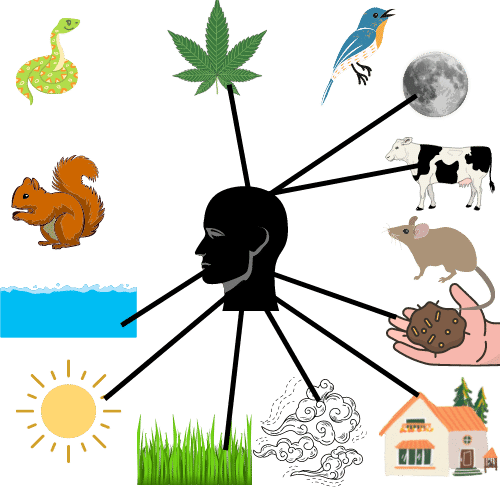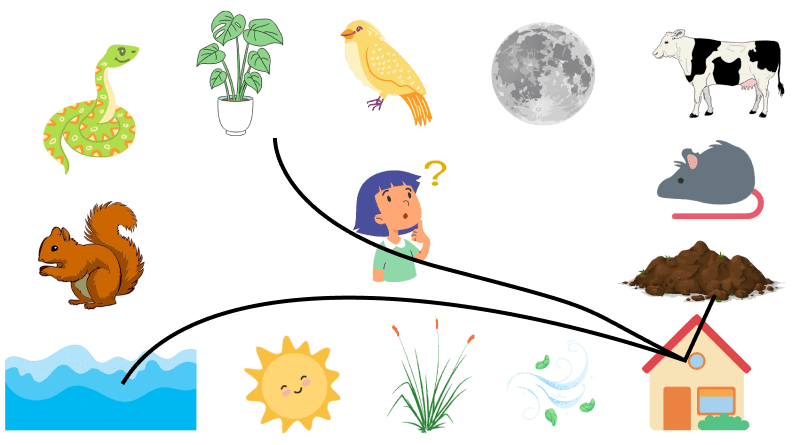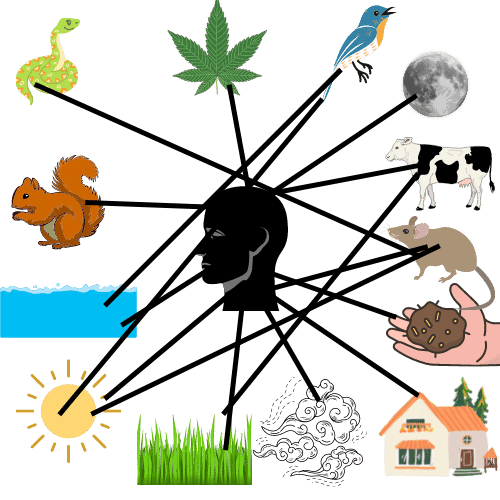Web of Life Class 3 EVS Chapter 24 CBSE Notes - 2025-26
FAQs on Web of Life Class 3 EVS Chapter 24 CBSE Notes - 2025-26
1. What is the main summary of the CBSE Class 3 EVS chapter, 'Web of Life'?
This chapter teaches us that all living and non-living things on Earth are connected to each other. It explains how plants, animals, humans, the sun, soil, air, and water all form an interconnected system where each part depends on the others to survive. This is the core concept of the 'web of life'.
2. For a quick revision, how is the sun essential in the web of life?
The sun is the primary source of energy. Plants use sunlight to make their own food through a process called photosynthesis. Animals and humans then get energy by eating these plants or by eating other animals that eat plants. Without the sun, there would be no food at the beginning of the chain.
3. How are plants and animals dependent on each other in this web?
The dependency between plants and animals is a key concept. Here’s a summary:
- Plants provide food and oxygen: Animals eat plants for energy and breathe the oxygen that plants release.
- Animals help plants: Animals help in spreading seeds to new places. Their waste also acts as a natural fertiliser for the soil, helping plants grow.
4. Why are non-living things like soil and water also part of the web of life?
Non-living things are crucial for survival. Plants need soil to grow and get nutrients. Both plants and animals need water to drink and live. They also need air to breathe. This shows that the web of life is not just about living beings but about their interaction with the environment.
5. What is the role of humans in the web of life as explained in Chapter 24?
Humans are an integral part of the web of life. We depend on plants for food (fruits, vegetables) and oxygen. We depend on animals for food (milk, eggs) and other products. We also rely on non-living things like water, air, and soil. The chapter helps us understand our responsibility to maintain this balance.
6. What is a simple example of a connection in the web of life?
A simple example is the connection between grass, a cow, and a human. The grass uses sunlight, water, and soil to grow. The cow eats the grass to get energy. A human drinks the cow's milk. This shows a direct link between the sun, soil, a plant, an animal, and a human.
7. What could happen if one element, like all snakes, was removed from the web of life?
If snakes were removed, the number of animals they eat, like rats and frogs, would increase a lot. Too many rats could destroy crops and spread diseases. This shows that removing even one element can disrupt the entire balance of the web, affecting plants and even humans. Every part has an important role.
8. What are the key terms to remember for revising the 'Web of Life' chapter?
For a quick revision of this chapter, focus on understanding these key concepts: interdependence (how everything is connected), the sun as an energy source, the roles of plants and animals, and the importance of non-living things (air, water, soil). Remembering these will help you summarise the entire chapter's theme.



















